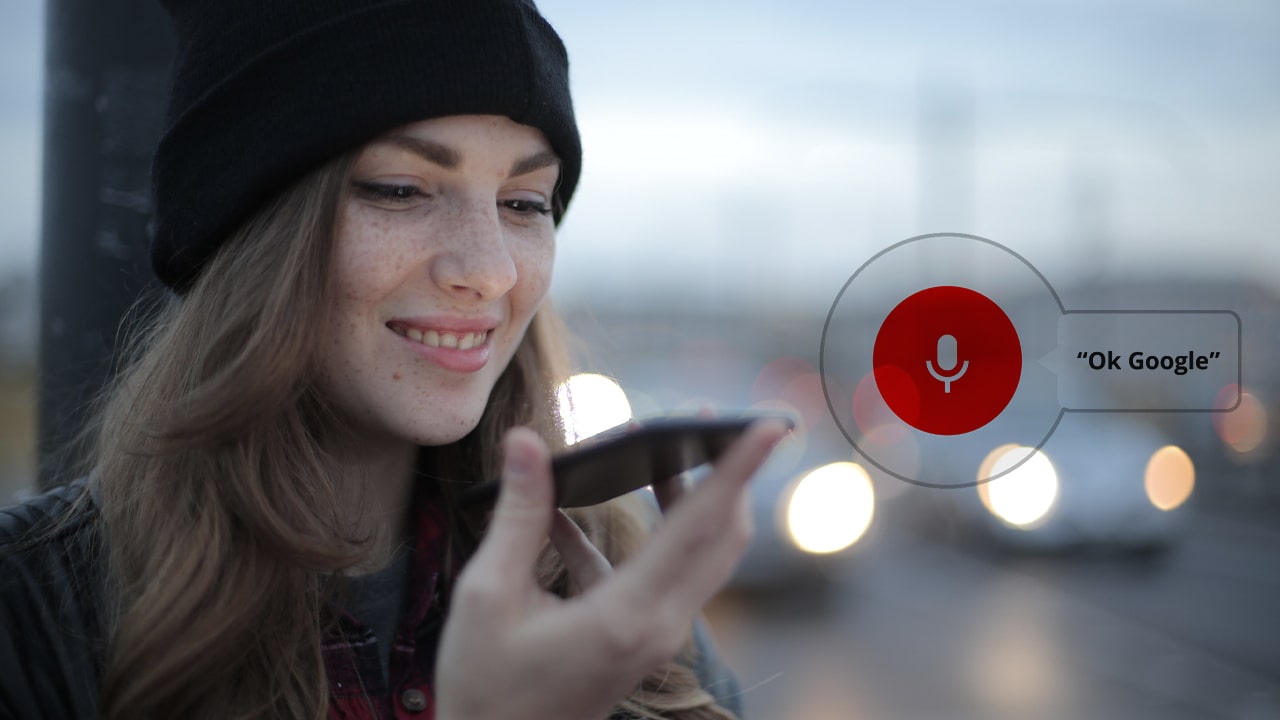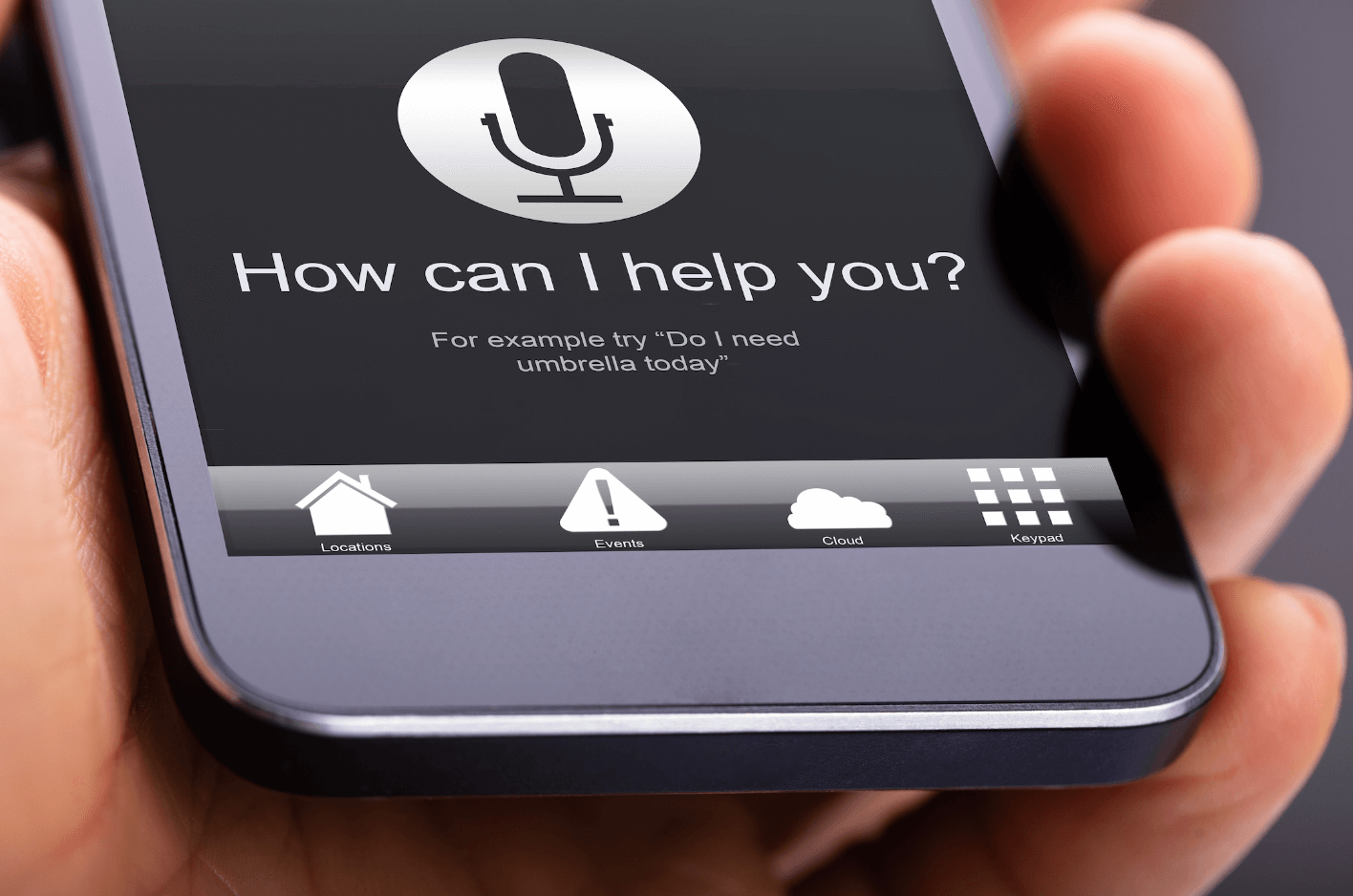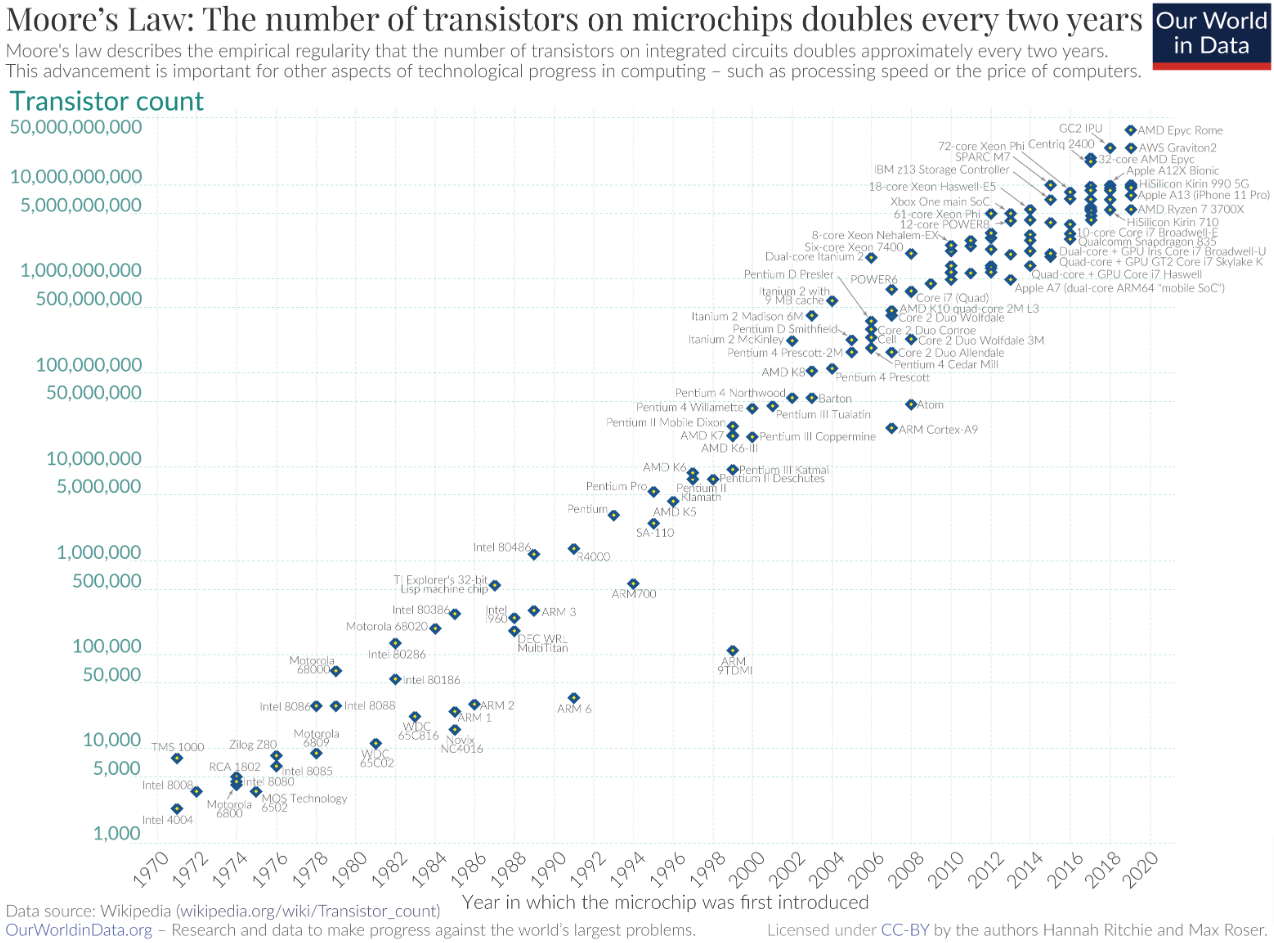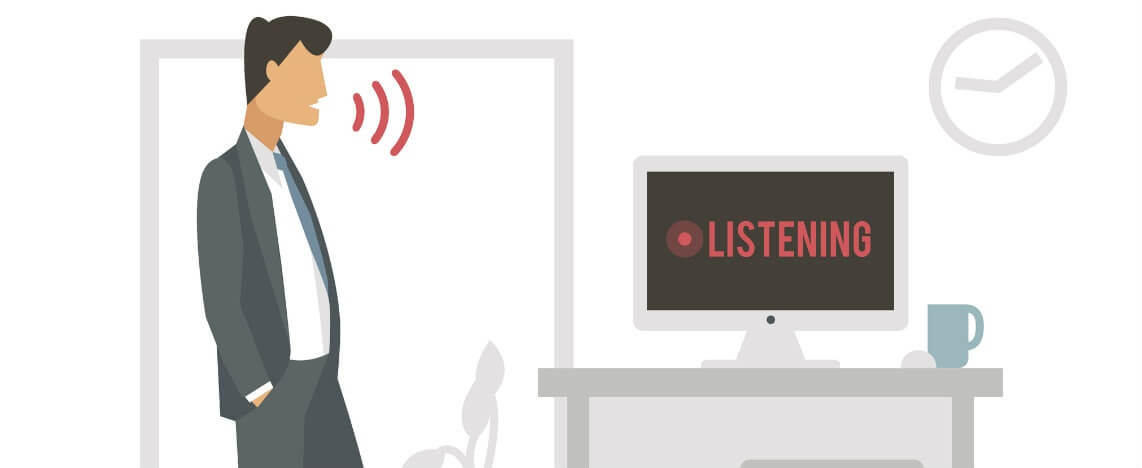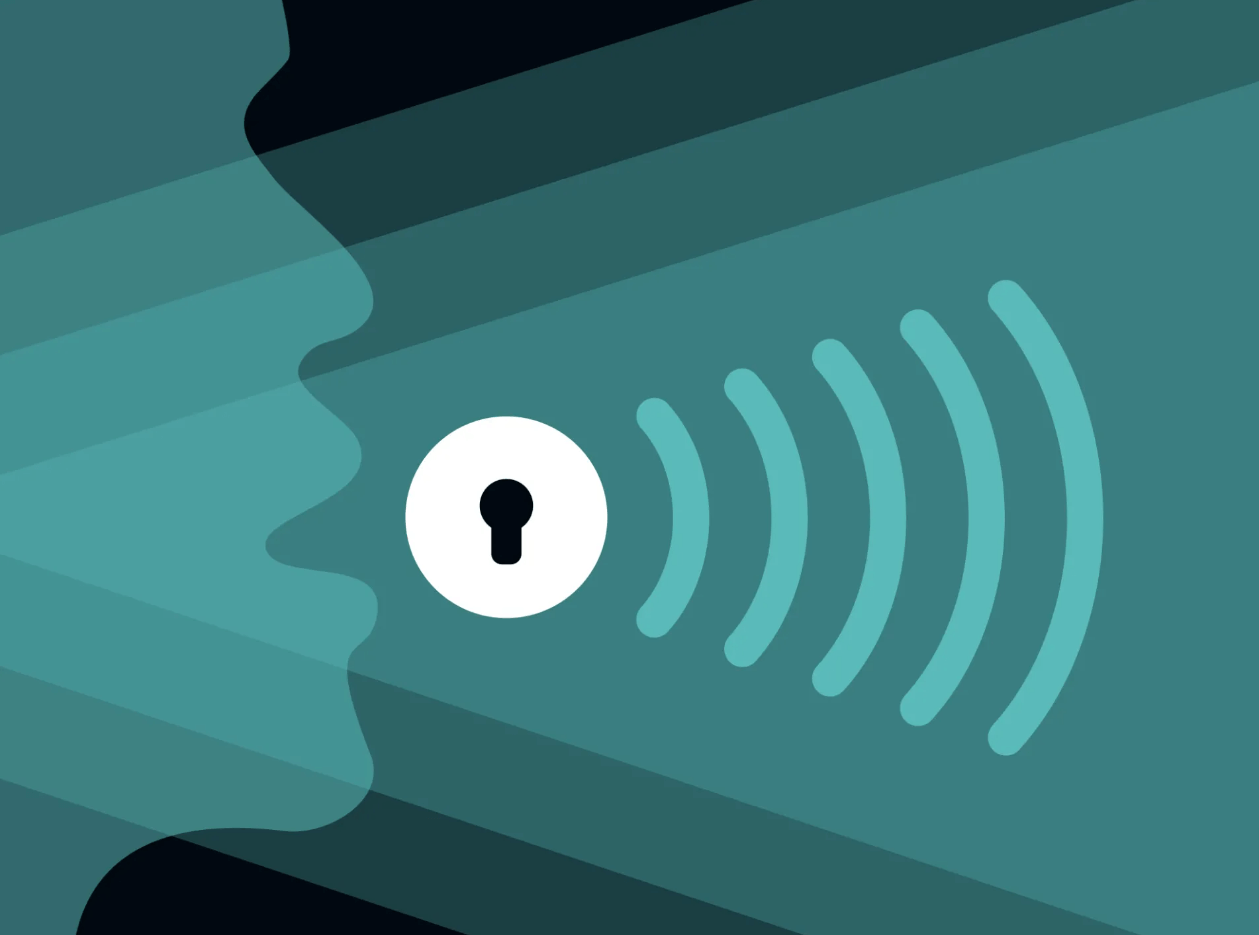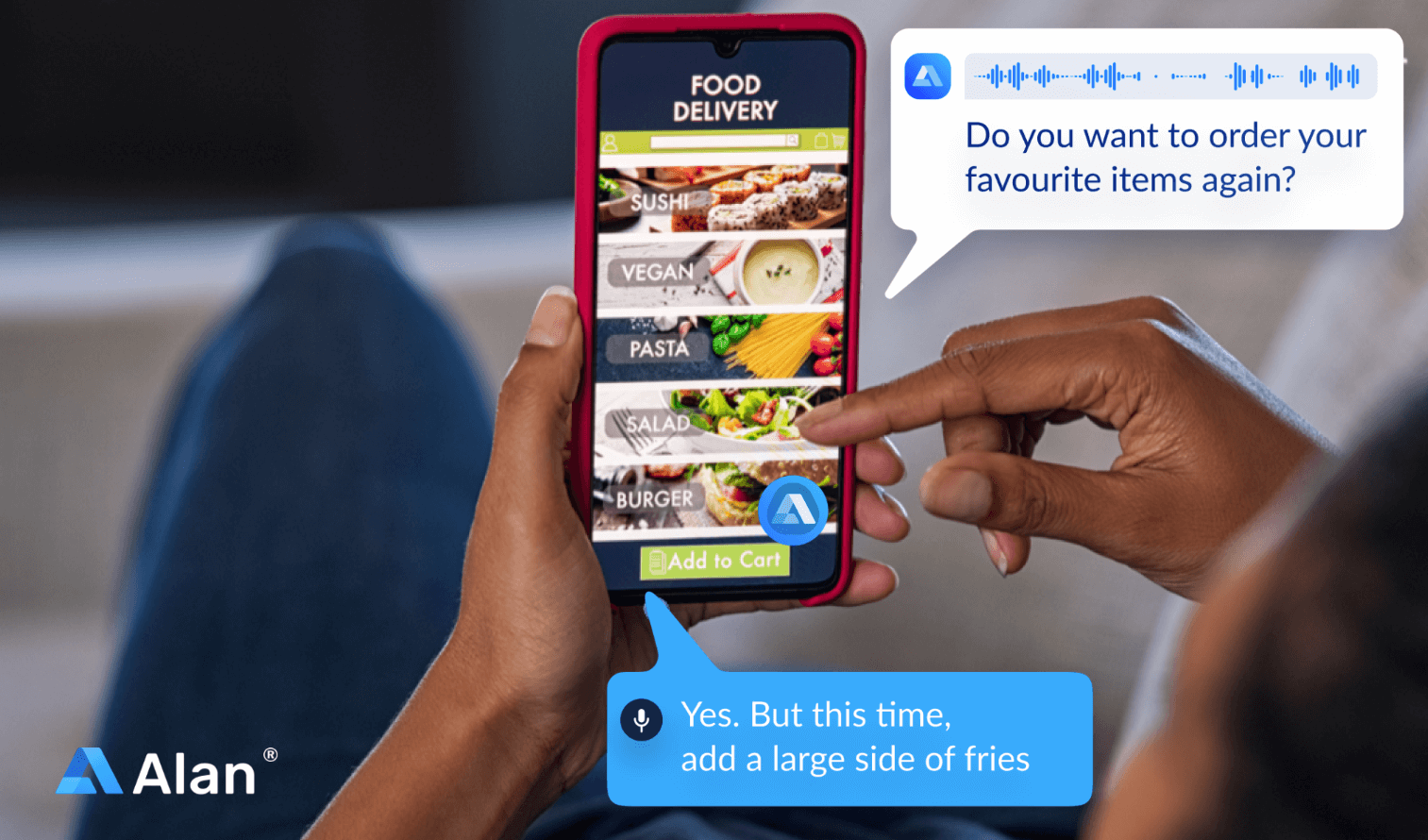Typing search queries are becoming a feature of the past, and voice technology is growing more practical and promising by the day. So, what additional opportunities await speech technology, and why is it so unique? We'll find out soon!
Introduction: Voice search in UX
Voice interaction represents the biggest UX challenge since the birth of the smartphone, so we break down the implications and opportunities of this paradigm shift in UX design.
The voice interaction feature has reached the mainstream in 2022. Voice interaction: the ability to talk to your device, and make them understand and act on whatever you're asking them - was everywhere this year.
Device makers have already integrated voice search capabilities into their offerings in 2022, with Amazon's Alexa stealing the show as their AI platform of choice.
The rapid proliferation of voice interaction capabilities in our digital ecosystem raises important questions for any designer whose work plays a role in the customer experience.
It is becoming clear that voice interaction will soon become an expected offering either as an alternative or as a complete replacement for traditional visual interfaces.
Voice UX is set to influence design, just as mobile touchscreens have turned web design on its head – except that change is coming very quickly, and is far from being limited to screen-based interactions. Is about to permeate every aspect of the lives of our users.
As consumers begin to talk to and understand their products, user-focused companies must learn to apply the same intentional design principles to these interactions as they do with visual interfaces, if they are ready for this new wave. Hope to meet the high expectations of users. Techniques to "just work".
In this article, we've explained some of the profound implications of voice interaction for UX design.
Just as the Internet began as a playground of raw new technological potential that over time adopted the guiding principles of intuitive, user-friendly product design, so are today's voice-enabled devices and tools in their infancy that have infinite potential. Which can be unlocked through innovative, user-centered design.
Some statistics on voice Search interfaces
Voice interactions have always distinguished people since they are a faster and more efficient means of transmitting meaning. In the larger scheme of things, it's strange we didn't implement it sooner in our technology. According to Google's Voice Search Statistics from 2016, voice searches accounted for 20% of all searches. Only five years later, it appears that entering search queries is becoming a relic of the past.
Let’s take a quick look at some voice search statistics:
- 24% of US adults use a smart speaker. This is up by 3% from the previous year.
- 20% of smartphone and smart speaker owners use their device’s voice assistant multiple times a day.
- 71% of consumers prefer using a voice search to look for information online rather than researching physically.
- 18-24-year-olds are adopting voice search technology much faster than the older groups.
- 34% of people not owning a voice assistant are keen on purchasing a smart speaker.
- Only 10% of people are not familiar with voice-enabled devices.
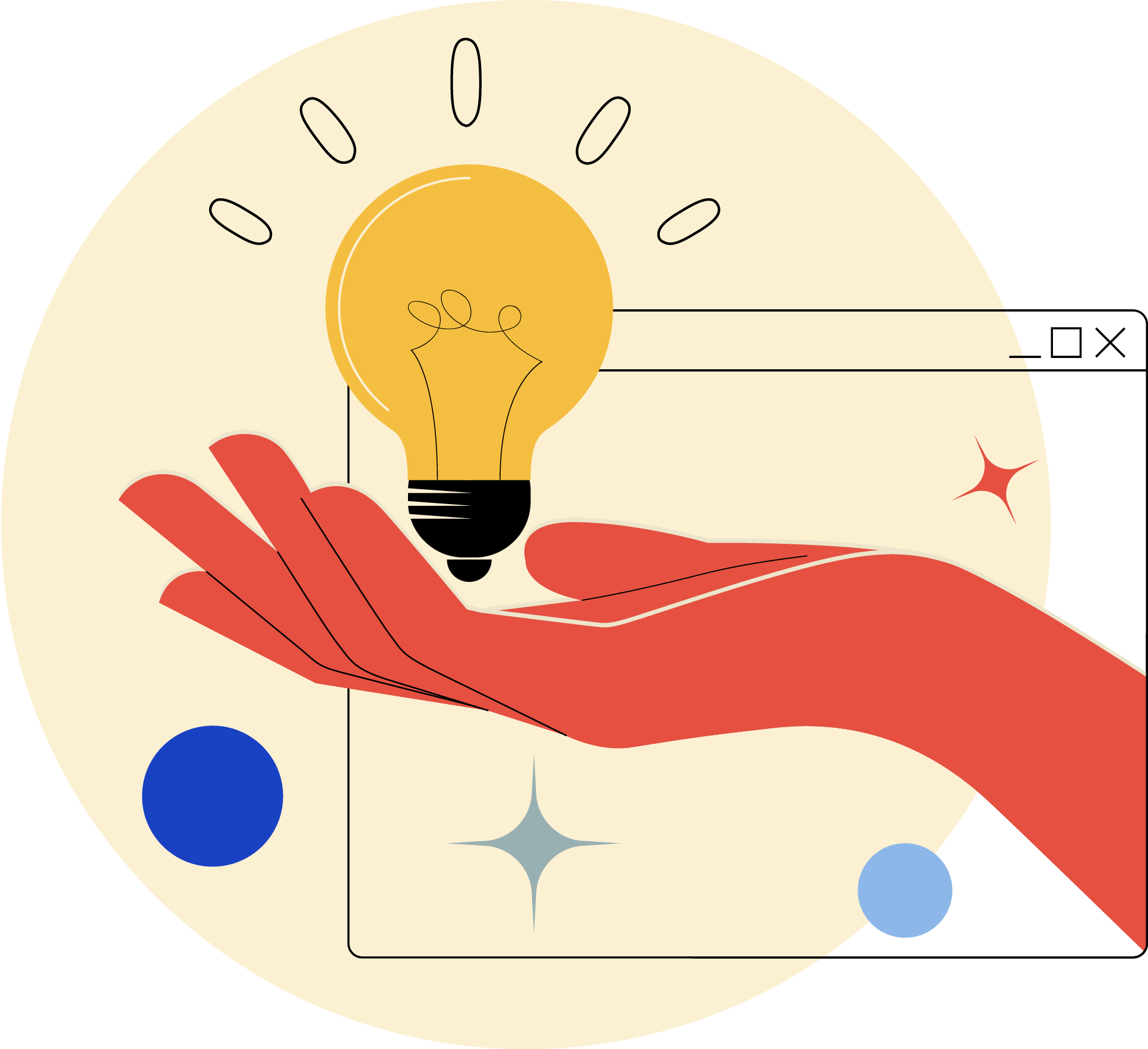
EXPLORE YOUR POSSIBILITIES
See how easy scaling design capacity can be
Book a call with us and get the party started!
Book A DemoThis massive consumer movement toward voice interfaces will ultimately result in the widespread adoption of this technology among companies. Here are a couple of such examples:
- Fintech products will gradually normalize voice-enabled payments and enhanced security via voice biometrics.
- Edtech platforms will use voice interfaces to assist children with learning and motor disabilities.
- The healthcare industry will use advanced voice recognition to automate filling in patient files, which may in some cases take up to 6 hours a day.
These are only a few instances of this technology's vast potential. This is an excellent opportunity for startup owners and usability professionals to become acquainted with speech technology and implement it into their businesses.
What can users do with voice?
According to a survey conducted by Adobe, the most common types of voice searches performed by users are:
- Searching for music via smart speakers (70%);
- Requesting the weather forecast (64%);
- Asking fun questions (53%);
- Searching for things online (47%);
- Checking the news (46%);
- Asking for directions (34%);
A customer intelligence report published by PwC suggests that users prefer using voice for a wide array of actions like texting friends and searching for stuff on the internet. However, they are somewhat reluctant to shop for things using voice.
What is a voice User Interface?
Voice UI, also known as voice-enabled search, allows consumers to seek information by speaking rather than typing.
As a result, this technology allows for the simplicity and efficiency of the search process, resulting in a better UX and a more accessible environment. Users will be able to do searches considerably faster as a result of this human-computer interface, while also reducing cognitive load and friction.
What is Driving the Adoption of Voice Interaction?
Before we get into the specific implications of voice for our industry, it is important to understand some of the forces that are driving the rapid adoption of this new interaction medium.
Moore's Law
Precise natural language processing has, until recently, only existed in the realm of science fiction, because it takes a lot of computing power to break down and interpret human speech in real-time.
In this era of technology where 1/3rd of the global population carries a microphone connected to a supercomputer in their pocket, it is not difficult to estimate the vast number of people who are adopting voice search as their input method of choice.
Book a call with us and get the party started!
LET’S WORK TOGETHER
Need help developing a similar project?
A Viable, Cross-Device Voice Platform
Just as the availability of the Internet was one of the major growth factors in getting more people online, the adoption of voice interaction will be limited by the variety of scenarios in which we can simply talk to our devices and be understood.
Alexa demonstrated its viability, based on the sheer number of software and hardware developers that have chosen to go onboard so far, as well as the number of their Echo devices.
As designers, we have to understand that humans have always been using intermediaries to interact with technology – from levers and pedals to punch cards, from code to GUIs, to touchscreens, and now to voice and beyond.
Every advancement in the way we use our devices was driven by the need to reduce friction: to get more done, faster, easier, and by more people.
So with this basic understanding of the driving forces behind voice interactions, let’s understand what does this trend mean for designers of UX?
The Implications of Voice Search for Designers
With the rise of the voice search feature, our choice of words will influence how people view the customer experiences we've designed, without any visual cues to serve as guides.
There is an urgent need for some kind of standardized set of command phrases and keywords so that users can seamlessly navigate between different AI systems. It's a safe bet that few will want to remember a proprietary set of commands for each of their AI assistants.
As designers, we must adapt and innovate to tackle some of the inherent limitations of this new medium.
- There are no images we can use to express the processes more clearly.
- We cannot use animations to communicate complex concepts more easily.
- There is no point telling the user "click here" when applied to the invisible interface of Voice, so we will need to develop a new dictionary of commonly understood and intuitive gestures for the user to perform.
Think about it for a second: The web's most fundamental design element, the clickable link, no longer has a place in the future standard of interface design.
Understanding the User Intent
Constant interpretation of commands between visual and voice interfaces will become a major concern for UX designers in charge of navigating this transition phase, especially for web applications.
To interpret a user's desired action without the obvious indication of a button click, it will be up to the designers to anticipate their intent at each point in the conversation and shape the appropriate response.
A hypothetical example: Saying the phrase "remove it" may be a valid command for voice-enabled versions of both a Microsoft Word document and your Facebook profile settings, but the consequences and intent behind saying the same word in each scenario will be very different. It will not always be so easy to make this distinction.
Consider how visual and voice interfaces handle a typical digital interaction – selecting an email newsletter.
In a traditional visual interface, the user-specific email subscription process is as follows:
Simple, fast, and clear, isn't it?
Now, how can the same process be started with voice?
"Subscribe me to this blog."
"Give me an update from this site"
"Join me in this blog's email newsletter"
There are myriad ways to articulate the same basic intent via voice - which means UX designers must make sure they're asking the right questions to draw appropriate verbal feedback from users.
Maintaining the User Engagement with Variability
Once the innovation of voice interaction begins for the mainstream user, product designers will be challenged to maintain user engagement.
As we saw in the email subscription example above, there are many ways to articulate clear-cut binary options when it comes to voice – but it is this variability that provides opportunities for intuitive design to boost user engagement.
The nucleus accumbens is the part of the human brain that lights up when something is craving, and in particular, it is highly stimulated by unpredictability. That means we pay too much attention when we can't predict what's going to happen; which partly explains gambling addiction.
This neurological trait is already employed by many designers at the forefront of UX for visual design, and will likely continue to be leveraged as we begin to shape our interactions with technology.
Designing the variability in these interactions opens the door to anthropomorphization and characterization of users’ moods and even personalities in user devices as voices.
This wide variation in possible responses also emphasizes the importance of producing meaningful error messages that get the conversation back on track without constantly disturbing the interaction with the user.
- Users will quickly lose interest in interacting with a voice that robotically repeats "I'm sorry, I didn't find it" like a broken phone tree menu.
Book a call with us and get the party started!
LET’S WORK TOGETHER
Boost your design scope with HealXRlabs
Brand and personality: expanding the voice search?
In addition to what they're saying, voices convey a wealth of meta-information to the listener, so it's easy to imagine brands taking advantage of the medium of voice search feature as an extension of their personalities.
Gender, age, change, tone, accent, rhythm, and tempo are all elements UX designers can use to create a unique customer experience with their brand.
- As soon as you book a Disney World vacation, the kids can finally talk directly to Mickey!
- Apple is looking for totally catchy, and yet soothing sounds for your next operating system.
- On the other hand, some brands may choose to let the user customize the voices they interact with – which leads to a philosophical debate: Who controls the brand? Is the company behind this? Or the perception of the customer?
Celebrities are likely to find a new source of income by licensing not just the sound of their voice, but their entire personality, as AI assistants.
Preferences, Priority, and Smart Summary
One of the advantages of maintaining a visual interface over Voice is the ability to clearly and hierarchically present multiple options to users – search results and pricing pages are good examples of this.
But how can you present a list of options to the user without any visual aid?
In this age of expected instant gratification, it's hard to imagine the average user patiently listening to their AI assistant as it describes the laundry list of search results.
A more viable approach may be to prioritize and summarize information based on known user preferences before answering - in other words, what a normal person would generally do in a conversation.
"Hey, Jason, where's a good place to go for pizza?"
"There are a few pizza restaurants in this area - would you like to walk or drive?"
"It's a nice day, I'm down to walk"
"Okay, James Pizza parlor is a 2-minute walk from here,
But if you want something cheaper, Papa John’s
Pizza is a 5-minute drive away."
"Good to know - let's do James Pizza today."
In the case of our hypothetical quest for pizza, a more user-oriented voice interaction, asking relevant follow-up questions ("How far do you want to walk?", "How much do you want to spend?") is best before recommending them.
There are broad applications for this kind of branching, dialog tree-powered interaction – hospitals, information kiosks, and hotel concierges can all drop the clunky touchscreen, and migrate to a fully conversation-driven conversation with voice-enabled devices.
EX: finding a hotel room - with each response crafted by designers according to the latest findings and best practices in hospitality research.
It will be up to the designers to identify this logical throughline for all types of requests and tailor the interaction with the user around it.
So that the machine can collect the necessary data to provide the best possible answer.
Importance of Voice search feature in UX designing
- With voice technologies, we can enjoy limitless possibilities and capabilities.
- Voice technologies serve as one of the essential innovations and implementations in the technological fields. Voice interaction can enhance search technologies and revolutionize the way we work.
- Another aspect is personalization in some of the best voice technologies; It provides a channel for the fastest and most secure modes of communication.
- It adds value to the mobile application user feedback with the inclusion of voice search technologies.
- It helps you find some essential products online through the technology sector is the voice search strategy.
- Voice search technologies support compatibility with artificial intelligence, which potentially generates a wide range of advanced options. i.e. the incorporation of artificial intelligence into voice search strategies provides intuitive and enhanced interactivity to application users.
- The objective of businesses is to ensure that customers enjoy the products they use and enjoy satisfaction, and voice strategies expand the boundaries of mobile applications, so users can search for almost anything without typing.
Challenges and Privacy
- Changes in voice interaction must account for several accessibility considerations - eg, people who are deaf, mute, or ill and have temporarily lost their voice.
Without thoughtfully and intentionally designed conversation, people with disabilities will miss out on the benefits of voice interaction features.
This can include designers who are building features in their experiences to run a hybrid interface configuration that provides both audio and visual cues to these categories of users.
- Privacy concerns are also very high in this new medium, and we're walking a fine line between minimizing friction at the risk of opening up new frontiers of vulnerability altogether.
Most voice-powered devices currently store and automatically remember needed user credentials for less friction, but this will likely come back to bite us.
- If our voice is our passport to this new medium, you should be able to prevent someone from spoofing it by recording your password aloud or editing your voice to synthesize commands you never gave.
These are imminent privacy concerns that UX designers must address to build trust in their users and bring voice interaction into the mainstream.
Summary: Focus and Design with Your Eyes Closed
Voice interaction is the next big leap in user experience (UX) design, and we'll see it grow exponentially in software and hardware products in 2023.
Many of the older paradigms we relied upon in Visual UX Design don't even apply to this new medium, so designers should be able to adapt and refine this raw new technology in many aspects by carefully and deliberately respecting it.
The terminology used in these interactions is working to better understand the intent of our users at each step.
Once the innovation of voice interaction kicks in, it will be up to UX designers to leverage persona to engage their users and innovate in the way AI assistants answer questions.
This will start with progress towards building a complete branded personality and tailoring the response to clarity and understanding.
The Voice search feature hasn't garnered that much fanfare yet, but I believe the same moment is upon us in the field of UX design, as voice interaction grows and allows for visual UX design in many situations.
